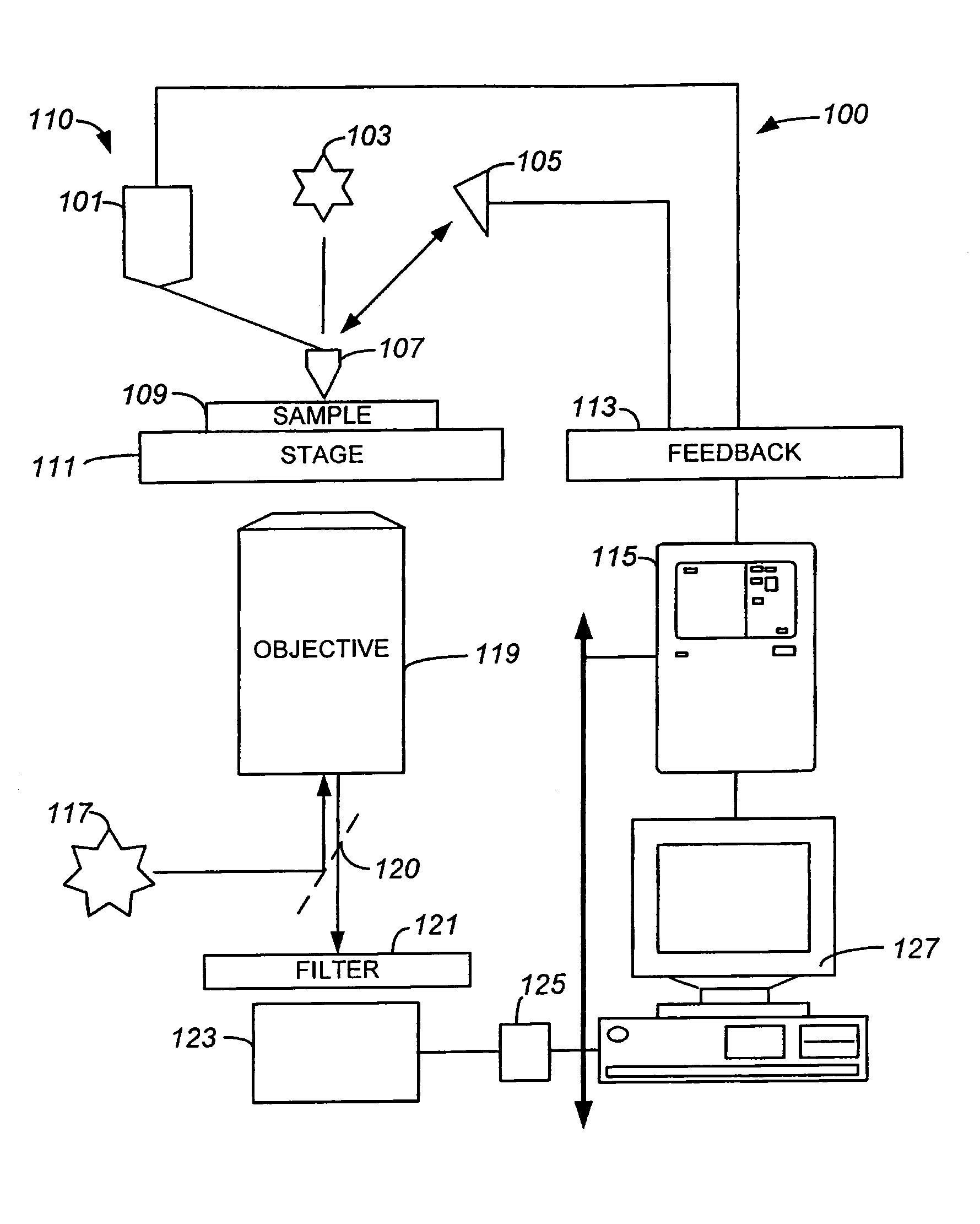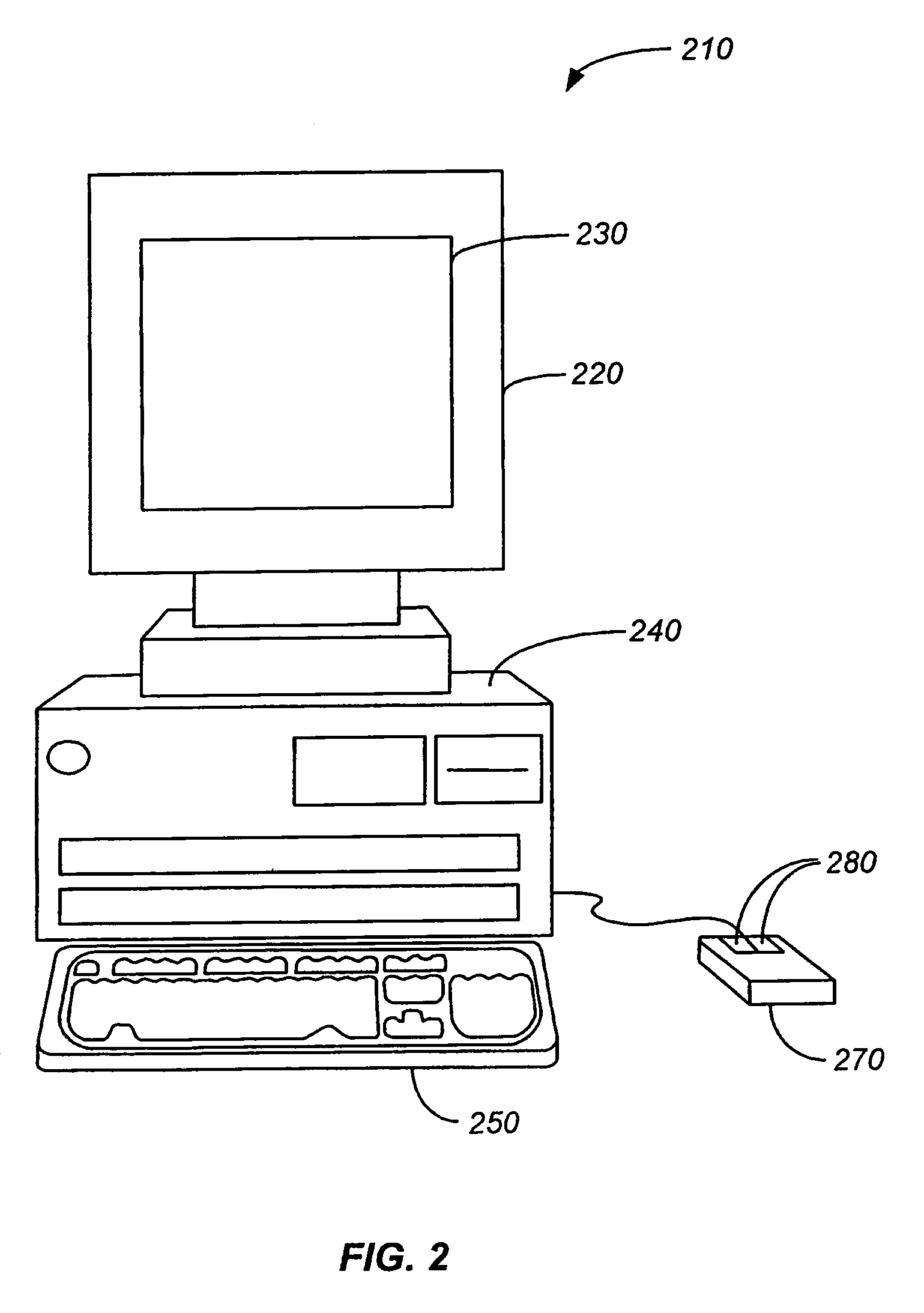Method and system for scanning apertureless fluorescence mircroscope
a fluorescence mircroscope and apertureless technology, applied in the field of high resolution microscopy techniques, can solve the problems of limited resolution ability of such far field optical microscopy, subwavelength aperture techniques that create other limitations, and may still exist certain practical limitations, etc., to achieve the effect of improving resolution, narrow transmission width and convenient us
- Summary
- Abstract
- Description
- Claims
- Application Information
AI Technical Summary
Benefits of technology
Problems solved by technology
Method used
Image
Examples
Embodiment Construction
[0042]According to the present invention, techniques for high resolution scanning are provided. More particularly, the invention provides methods and systems for improved high resolution scanning using apertureless near field scanning microscopes that image one or more fluorescent samples with single photon excitation, which we call fluorescence ANSOM microscope. But it would be recognized that the invention has a much broader range of applicability. For example, the invention can be applied with other types of images such as Raman scattering, multiphoton imaging techniques, and others. Additionally, the samples can be from a variety of different fields such as electronics, semiconductor, organic chemistry, life sciences, biotechnology, and others.
[0043]FIG. 1 is a simplified diagram of a scanning system 100 according to an embodiment of the present invention. This diagram is merely an example, which should not unduly limit the scope of the claims herein. One of ordinary skill in th...
PUM
 Login to View More
Login to View More Abstract
Description
Claims
Application Information
 Login to View More
Login to View More - R&D
- Intellectual Property
- Life Sciences
- Materials
- Tech Scout
- Unparalleled Data Quality
- Higher Quality Content
- 60% Fewer Hallucinations
Browse by: Latest US Patents, China's latest patents, Technical Efficacy Thesaurus, Application Domain, Technology Topic, Popular Technical Reports.
© 2025 PatSnap. All rights reserved.Legal|Privacy policy|Modern Slavery Act Transparency Statement|Sitemap|About US| Contact US: help@patsnap.com



